The right machine can elevate your coffee experience, making each cup delicious. A dual boiler offers precise temperature control for brewing and steaming.
On the other hand, a heat exchanger heats water quickly and allows for good espresso extraction. Understanding these options helps you decide which fits your style.
Understanding The Basics: Heat Exchanger Systems
In this section, we will focus on understanding heat exchanger systems. These systems provide a unique way to brew espresso while steaming milk simultaneously.
Comparison of Our Favorite Dual Boiler Espresso Machine in 2025
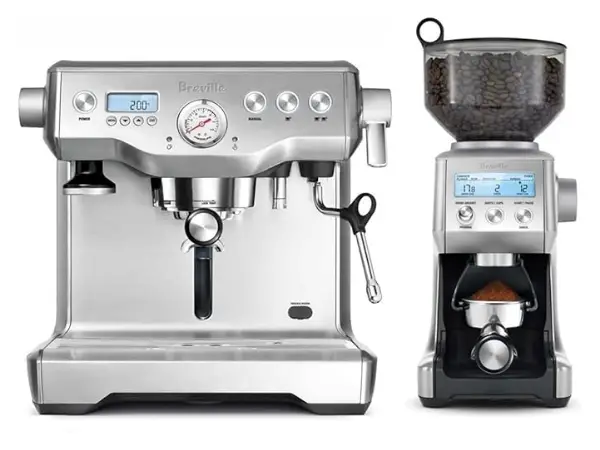
Breville Dynamic Espresso Machine
Hot Water Dispenser
Integrated Grinder
Pre-Infusion
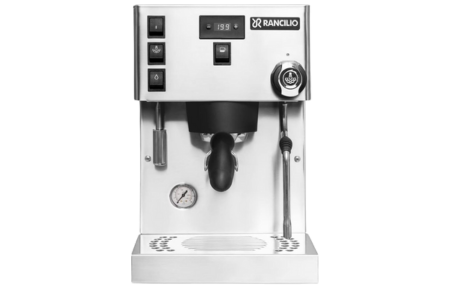
Rancilio Silvia Pro X Espresso Machine
Powerful Steam Wand
High-Quality Build
Fast Heat-Up Time
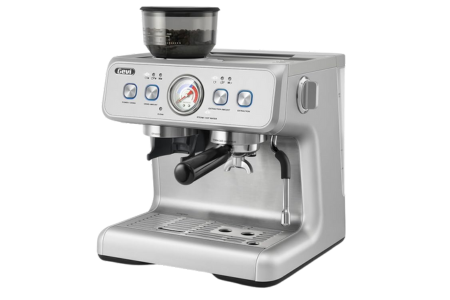
Gevi Ezbru 2000 Espresso Machine
Built-in Grinder
PID Temperature Control
Full Stainless Steel Housing
How Heat Exchangers Work: A Single Boiler Solution
A heat exchanger uses one boiler to heat water for both brewing and steaming. The machine has a single boiler that heats water to a high temperature. This heated water moves through a separate pipe, called the heat exchanger, to brew espresso. Here’s how it works:
- The boiler heats water to around 200°F (93°C).
- When you pull a shot, cold water enters the heat exchanger.
- The hot water in the exchanger warms up the cold water.
- This heated water brews your espresso at the right temperature.
This method allows for brewing and steaming at the same time. Here’s a quick comparison of heat exchanger systems:
| Feature | Heat Exchanger | Dual Boiler |
|---|---|---|
| Temperature Control | Single control for both | Separate controls |
| Simultaneous Use | Yes | Yes |
| Cost | Lower | Higher |
In summary, heat exchangers offer a practical solution for those who want to brew and steam at the same time without needing two separate boilers.
Pros Of Heat Exchanger Machines: Cost And Efficiency
Heat exchanger machines come with several benefits. First, they tend to be more affordable than dual boiler systems. This makes them appealing to many home baristas. Here are some advantages:
- Cost-Effective: Generally, heat exchangers are cheaper to purchase.
- Space-Saving: They take up less space, perfect for small kitchens.
- Quick Recovery: They can brew and steam at the same time, increasing efficiency.
- Less Complexity: Fewer components mean less chance of breakdowns.
Heat exchangers also heat water quickly. This is helpful for busy mornings. You can brew coffee right after steaming milk. Overall, these systems balance cost and efficiency well.
Cons Of Heat Exchanger Machines: Temperature Fluctuations
Despite their advantages, heat exchanger machines have some downsides. One major concern is temperature control. Here are the main issues:
- Temperature Fluctuations: The brewing temperature can vary.
- Learning Curve: It may take time to master the brewing process.
- Inconsistent Shots: Some shots may taste different due to temperature changes.
Many users report that maintaining the right temperature can be tricky. This affects the taste of the coffee. A good practice is to run water through the machine before brewing. This helps stabilize the temperature.
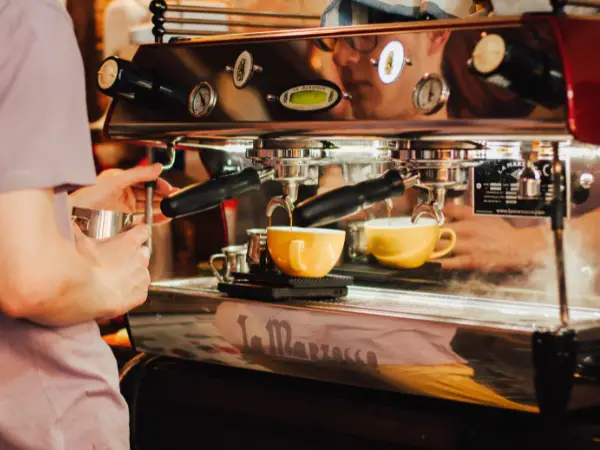
Delving Deeper: Dual Boiler Systems
Let’s delve deeper into the dual boiler systems. Understanding their features can help you make the right choice for brewing the perfect cup.
The Dual Boiler Advantage: Separate Brewing And Steaming
A dual boiler system offers a significant advantage. It has two separate boilers for brewing and steaming. This setup allows you to brew espresso and steam milk at the same time. Here are some key benefits:
- Efficiency: Brew and steam simultaneously.
- Temperature Control: Each boiler operates at its ideal temperature.
- Better Flavor: Precise temperature helps extract better flavors.
These features make dual boiler machines a favorite among serious coffee lovers. Here’s a quick comparison of brewing and steaming in a dual boiler setup:
| Aspect | Brewing | Steaming |
|---|---|---|
| Boiler Type | Dedicated boiler | Dedicated boiler |
| Temperature Control | Stable temperature | Stable temperature |
| Simultaneous Operation | Yes | Yes |
This separation helps maintain the quality of both brewing and steaming. It enhances your coffee-making experience.
Pros Of Dual Boiler Machines: Precision And Consistency
Precision and consistency define dual boiler machines. They offer several advantages that appeal to home baristas:
- Exact Temperature: Each boiler maintains a specific temperature.
- Consistent Shots: You can pull shots with the same taste every time.
- Custom Settings: Adjust temperature for different coffee types.
This precision allows for better control over brewing. You can fine-tune extraction. The result is a consistently rich and flavorful espresso. Many baristas prefer dual boilers for their reliability.
Here’s a quick list of pros:
- High-quality espresso
- Fast drink preparation
- Easy to use for beginners
With these benefits, dual boiler machines stand out. They cater to those who want the best coffee experience at home.
Cons Of Dual Boiler Machines: Cost And Complexity
Dual boiler machines come with challenges. The main issues are cost and complexity. Let’s explore these drawbacks:
- Higher Price: Dual boiler systems are often more expensive.
- More Components: More parts mean more potential for issues.
- Learning Curve: It can take time to master.
These factors can deter new baristas. The upfront cost can be high. Maintenance can add to expenses too. Dual boiler machines require regular cleaning and care.
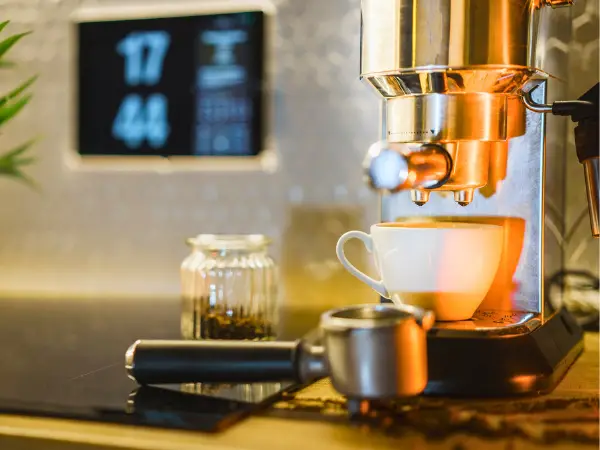
Key Differences: A Side-by-side Comparison
Understanding the key differences is essential. This comparison helps you decide which machine suits your needs best. Let’s explore the vital differences side by side.
Temperature Stability: A Crucial Factor
Temperature stability is vital for brewing espresso. Both types of machines handle this differently.
- Dual Boiler: This machine has two separate boilers. One is for brewing, and the other is for steaming. This separation keeps the temperature stable.
- Heat Exchanger: It uses a single boiler with a heat exchanger tube. This method can lead to temperature fluctuations.
The table below shows how each type performs in terms of temperature stability:
| Feature | Dual Boiler | Heat Exchanger |
|---|---|---|
| Temperature Control | Excellent | Good |
| Consistency | Highly consistent | Moderately consistent |
| Warm-up Time | Longer | Shorter |
For those who value perfect temperature, a dual boiler is the way to go. The heat exchanger is suitable for casual use, but may not deliver the same consistency.
Steaming Power And Simultaneous Brewing
Steaming power is essential for making milk-based drinks. It impacts how quickly you can prepare your favorite beverages.
- Dual Boiler: Allows brewing and steaming at the same time. This feature is great for busy mornings or when making multiple drinks.
- Heat Exchanger: Can also steam and brew simultaneously, but with less power. This might result in longer wait times.
Here’s a quick comparison:
| Feature | Dual Boiler | Heat Exchanger |
|---|---|---|
| Simultaneous Brewing & Steaming | Yes | Yes |
| Steaming Power | Strong | Moderate |
| Ideal for | Coffee lovers | Casual drinkers |
For those who enjoy crafting lattes and cappuccinos, a dual boiler provides the best steaming power. If you make fewer milk drinks, a heat exchanger may suffice.
Recovery Times And Workflow
Recovery time affects how fast you can make your next cup. It matters when serving guests or enjoying multiple cups.
- Dual Boiler: Excellent recovery time. It quickly returns to the optimal brewing temperature.
- Heat Exchanger: Slower recovery. It takes time to return to the right temperature after steaming.
The following table highlights recovery times:
| Feature | Dual Boiler | Heat Exchanger |
|---|---|---|
| Recovery Time | Fast | Slower |
| Best for | High volume | Casual use |
Choose a dual boiler for busy mornings or entertaining. For light users, a heat exchanger still works well.
Practical Considerations For Home Baristas
Practical considerations help you decide which machine fits your needs. Think about your budget, skill level, and how often you make coffee. These factors shape your choice and improve your coffee-making experience.
Budget And Investment: Finding The Right Balance
Dual boiler machines are often more expensive. They have separate boilers for brewing and steaming. Heat exchangers, on the other hand, are usually cheaper.
Here’s a simple table to compare costs:
| Type | Price Range | Longevity | Maintenance |
|---|---|---|---|
| Dual Boiler | $1,500 – $3,000 | Long-lasting | Less frequent |
| Heat Exchanger | $800 – $2,000 | Shorter lifespan | More frequent |
Finding the right balance between cost and features is key. Think about your budget. A well-chosen machine will enhance your coffee experience.
Skill Level And Experience: Choosing Your Machine
New baristas may prefer a heat exchanger. They are generally easier to use. Experienced baristas might choose a dual boiler. These machines offer more control over brewing and steaming.
Consider these aspects:
- Ease of use:
- Heat exchangers: straightforward and user-friendly.
- Dual boilers: more settings, requires practice.
- Learning curve:
- Heat exchangers allow quick learning.
- Dual boilers need time to master.
- Customization:
- Dual boilers offer more options.
- Heat exchangers have limited settings.
Here’s a quick overview of skill levels:
| Skill Level | Recommended Machine | Reason |
|---|---|---|
| Beginner | Heat Exchanger | Simple operation |
| Intermediate | Dual Boiler | More control |
| Advanced | Dual Boiler | Customization options |
Understanding your skill level helps in choosing the right machine. Select what suits your experience for the best results.

